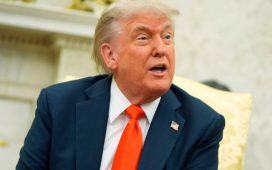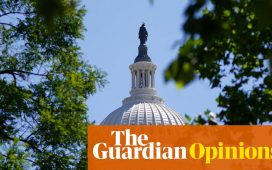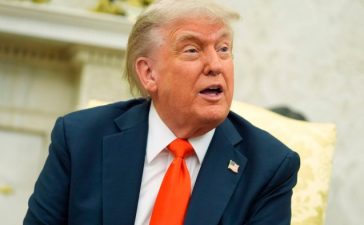Unlock the Editor’s Digest for free
Roula Khalaf, Editor of the FT, selects her favourite stories in this weekly newsletter.
The Federal Reserve will cut interest rates on Wednesday. Until last Thursday, guidance from Fed officials had been that there was no need for anything dramatic at the meeting where the US central bank would pivot to rate cutting with a quarter point cut amid growing signs of a soft landing. In the late July meeting, chair Jay Powell said a 0.5 percentage point rate cut in September was “not something we’re thinking about right now”.
Financial markets expected a series of cuts and loosened financial conditions. In the Fed’s quiet period on Thursday evening, both the FT and Wall Street Journal carried unsourced news reports saying the Fed was weighing up whether to be more forceful early and start with a 0.5 percentage point rate cut. While I do not know the sourcing of these reports, I do know, having been an FT economics reporter for many years, that both news organisations put strict sourcing requirements on their journalists. Whatever the sourcing, financial markets have interpreted the simultaneous news reports as the equivalent of a “drop”, a briefing from within the Fed.
The reports said the Fed was weighing up a decision between a quarter- and a half-point cut. Here is the case for and against.
A big cut early allows the Fed to bring interest rates down quickly from between 5.25 and 5.5 per cent to something closer to neutral at a time when the inflation threat is receding and unemployment has risen. Not cutting in July was probably a mistake, so why wait?
The economic case against is that the US economy is not falling off a cliff, inflation is still somewhere around 2.5 per cent and financial conditions have already loosened significantly. The Fed can accelerate the pace of cuts easily if required.
Neither of these is decisive.
But I worry about communications. A large cut demonstrates the Fed was behind the curve in July. It signals a crisis of confidence in the central bank and has a whiff of panic about it, even if stock markets are jubilant (they love the idea that the Fed will underpin values).
September 2024 is also a highly sensitive time to cut rates when one candidate for president, Donald Trump, has already said it is “something that they know they shouldn’t be doing” before an election. The Trump campaign loves to invoke conspiracy theories of the deep state and the media ganging up to stop his ability to make America great again.
According to the Trump campaign, the media has not reported immigrants eating dogs and cats in Springfield, Ohio, and the presidential debate was rigged by ABC News against Trump. These two baseless conspiracy theories were from the past week alone. There is an appetite for this stuff, however absurd, and I am concerned the Fed will feed it on Wednesday.
I’ll repeat. The economics do not matter much, but the communication does.
Cheap oil
It’s late summer. Global demand is weakening and oil supply is rising as non-Opec countries increase output. A particularly large rise in US shale oil production has put pressure on Opec states as to whether to maintain cuts in supply or seek to increase their market share and hurt US producers with lower prices.
I am, of course, describing 2014, but I could be talking about today, especially with recent rises in US oil production. A decade ago, the nominal oil price fell from above $100 a barrel to an average of about $50 during 2015.
This year, Opec+ nations said they would begin to unwind output cuts made to keep oil prices high, but have postponed action until later this year because the market responded quickly. Last week, the Brent crude price fell below $70 for the first time since 2021. Futures prices have also dropped sharply, highlighting the similarity with 2014.
Central bankers love a scenario. Generally, these tend to model the risk of higher energy prices. There will be a prize for the first central bank that produces a scenario based on 2014 and the possibility that the decline in current and future oil prices continues through next year.
Decisions, decisions
The European Central Bank surprised no one with its decision last Thursday to cut rates a second time to 3.5 per cent. In her press conference, ECB president Christine Lagarde warned people to not necessarily expect another cut at the next meeting in October and to discount the September headline rate of inflation, which will drop due to lower energy prices.
Domestic inflation was highlighted as a greater concern. “It is not satisfactory. It is resistant. It is persistent,” she said.
The path for the rest of the year looks pretty clear. The ECB pauses in October and cuts again in December, with more to come in 2025.
What was not said by Lagarde was that underlying ECB staff projections were dovish. Based on conditioning assumptions of lower interest rates in 2025 and 2026 than in June, the ECB still expects core and headline inflation to fall to target with an economy weaker than previously hoped.
Lower growth, same inflation and lower interest rates is not a great combination for the Eurozone.
What I’ve been reading and watching
-
Tiff Macklem, governor of the Bank of Canada, spoke to the FT and opened the door to accelerating the pace of interest rate cuts. The BoC has a much weaker economy than the US and one that is more dependent on high energy prices
-
The Kent A Clark Center at the University of Chicago Booth School of Business regularly surveys top US academics on policy matters. In the past week, they mirrored my past two newsletters on the US election. Large majorities said weakening Fed independence, tariffs and price controls were bad while there was little evidence that price gouging was responsible for inflation. A sister survey, run in conjunction with the FT, projects that the US economy is heading for a soft landing
-
Italy is in a panic about coffee prices. Unlike most other raw commodity prices, these are going through the roof
-
Inflation of a different sort. Gary Stevenson claims to have been the best trader in the world. His old colleagues disagree. It’s a great read
A chart that matters
The Bank for International Settlements published its quarterly review on Monday and, indirectly, put its finger on the extreme data dependence in financial markets.
Using rolling regressions, the BIS calculates that since 2022, two-year bond markets have become much more sensitive to surprises in US inflation and jobs data. The most recent data (not shown in the chart) suggests markets now only care about non-farm payroll surprises and had an extreme reaction to the weak July data, released in early August.
When Powell says the Fed “will be data dependent but not data point dependent”, it should be concerned that financial markets are not listening.












